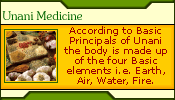|
The "Soul" lives in the body so it is considered as purusha,
as anyone who live in this home i.e. body is called purusha. In
ayurveda the body has no meaning without purusha (soul). Two meanings
of soul are to be considered the ayurvedic concept regarding the
purusha: First meaning is considered for "Jeevetma" (soul))
which is called as "shuddha purusha".
Second meaning is considered for body along with soul (living body)
which is named as "karma purusha". The living body is
responsible or required for performance by the purusha or Jeevetma,
hence the body along with purusha (soul) is named as "Karma
Purusha".
Whole ayurveda is compiled for the betterment of karma purusha
and thus it holds great importance in ayurveda.
Different Classification of Purusha
On the basis of the constituents karma purusha are classified as
the following categories:
Ek dhatwatmak Purusha (one constituent)-
Jeevatma (soul) is considered as a Ek dhatwatmak Purusha (One constituent
Purusha). It is also called as shuddha (Pura) Purusha.
Karma Purusha- The body along
with its soul is considered as Karma Purusha.
It is classified as followed on the basis of its constituents.
Dwi dhatwatmak Purusha(Two constituent)-
Combination of shuddha Purusha (Jeevatma i.e. Soul) and body. Purusha
+ body
Tri dhatwatmak Purusha (Three constituent)- Combination of shudha
Purusha and body connected by satva (Mana i.e. mind)
Panchadhatwatmak (Five constituents)
This indicates the constituent of body only because it is the only
visible part in the (Karma Purusha). This body is made up of panchamahabhoota.
Shad dhatwatmak Purusha(Six
constituents)
According to this Karma Purusha has six constituent i.e. Panchmahabhoot
and Atma.
Sapta dhatwatmak Purusha (Seven
constituent)
It has two theory, the first implies that it is composed of panchmahabhoot.
Mana and Atma. Second implies that it is made up of seven dhatus
of the body which are responsible to maintain the Seven dhatus are
Ras, Rakta, Mansa, Meda, Asthi, Majja & shukra.
Chaturvinsati dhatwatmak Purusha (twenty four constituents)
According to this theory of evolution of the universe ' Avyakt'
gave rise to 'Mahat'. From 'Mahata' arose Anhankara. 'Anhankara
is considered to be of three types, namely- Satvik, Tamsik and Rajasik.
Satvik ahankar along with tamasik anhakar give rise to Pancha gyanindriya
i.e. Pancha Karma indriuya and one ubhaya indriya (Mana). Whereas
Tamasik ahankar with Rajsik ahankar give rise to five tanmatra.
These matras develop panchamahabhoota. All these constituent from
Avyakta to Mahabhoot count to twenty-four. These constituents are
categorized into two groups i.e. Prakruti and vikar. There is a
further classification of eight constituents that fall under parukruti,
namely: Aviakt, Mhat, Ahankar, Five tanmatra (Sabde, Sparbhe, Rupa,
Rase & gandha).
There are sixteen Vikratis, these vikratis are the by product and
cannot generate new things: Five gyan indriya, Five Karma indriya,
one mana (Ubhaya indriya) and Five maha bhootas.
Twenty five dhatwatmak Purusha(Twenty five constituents)
The combination of atma (sadha purusha) and the twenty four constituents
of karma purusha it becomes twenty five constituents of karma purusha.
It is now that the development takes place but with the increase
in age this force decreases and hence death occurs.
In ayurveda the body (sharir) is known as the deha and is defined
as the the adhisthan (home place) of Chatra (Soul) which is composed
of Pancha Mahabhoota and its vikar (By Product). Dhatu, which forms
the main infrastructure of the body is concerned with the word vikara,
the doshas, dhatus & mala are the byproduct of pancha mahabhoota.
According to shushruta.
The sharir is thus defined as the mixing of Shukra and Ova along
with Atma (soul), Prakruti.
|









